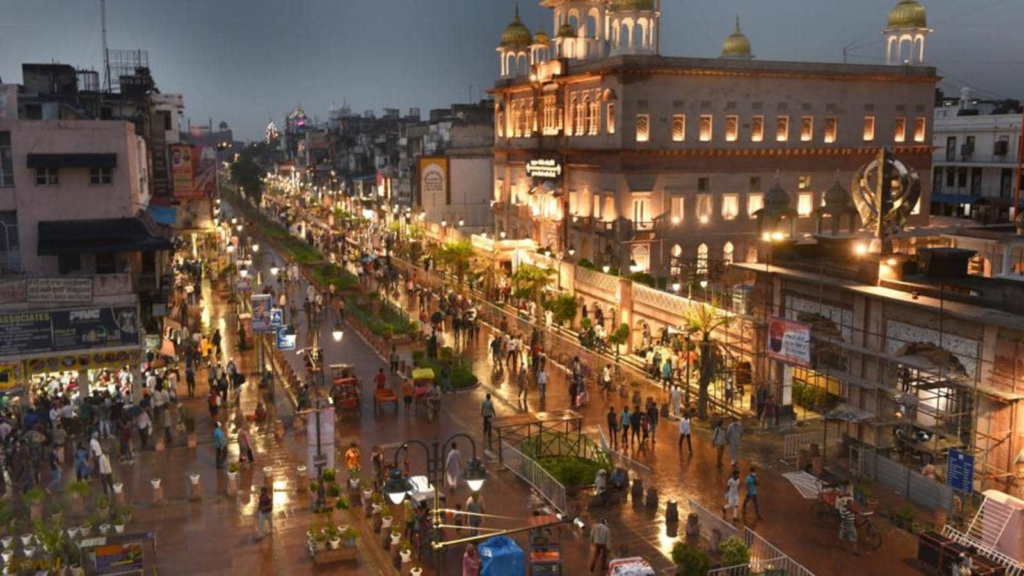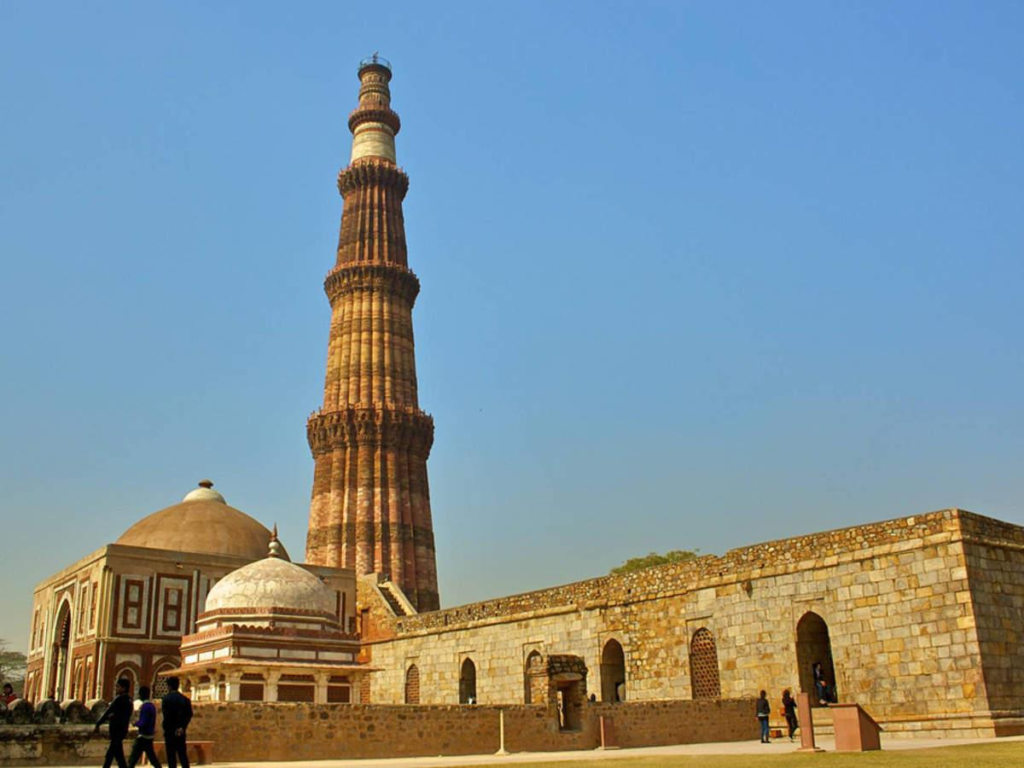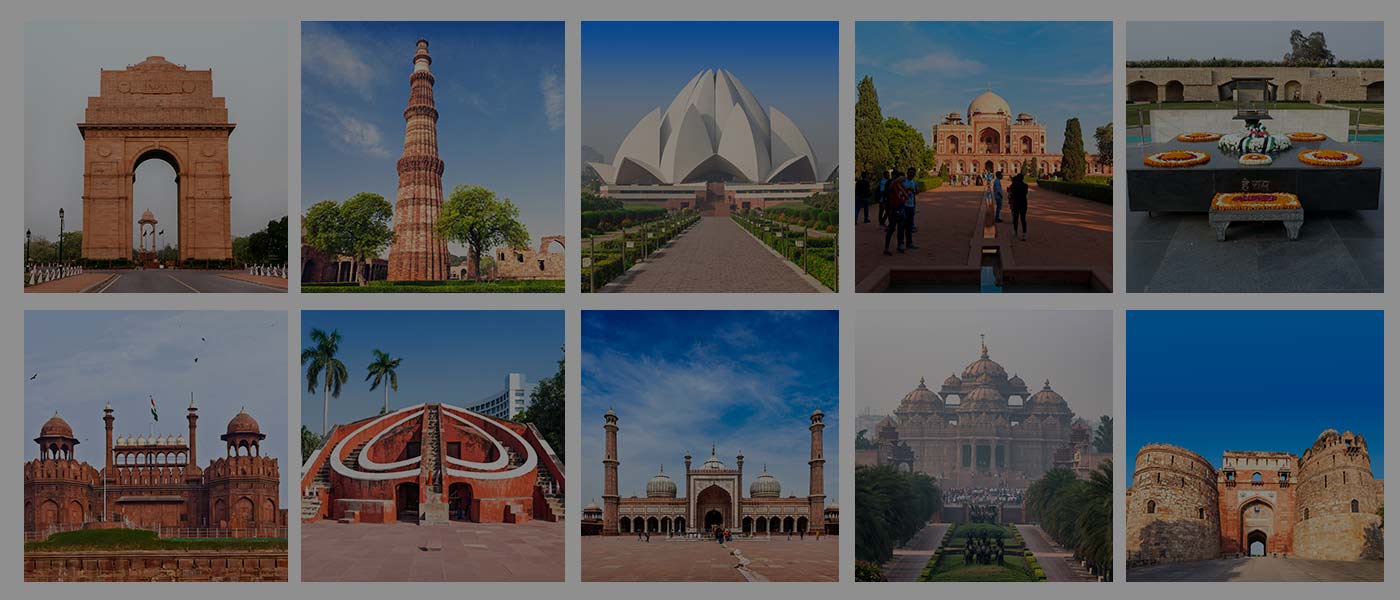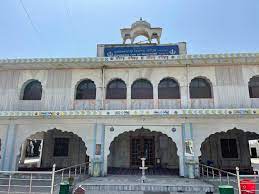Delhi, India’s capital, has a long history. The city is peppered with enthralling mosques, forts, and monuments left over from the city’s former Mughal rulers. The contrast between wandering Old Delhi and well-planned New Delhi is enormous, and it’s worth spending time exploring both. If you need to unwind, simply visit one of Delhi’s flourishing landscaped gardens.
The Red Fort

The Red Fort, Delhi’s most iconic structure, is not only a strong reminder of Mughal-era India but also a symbol of India’s struggle for independence. It was built by the fifth Mughal emperor Shah Jahan in 1638 when he decided to relocate his capital from Agra. The fort has been seized by both the Sikhs and the British during its stormy history. Each evening, a one-hour sound and light display depicting the fort’s history is held to transport you back in time.
Jama Masjid

Jama Masjid is another magnificent Old City jewel, and it is one of India’s largest mosques. Its courtyard can accommodate up to 25,000 devotees. Its courtyard can accommodate up to 25,000 devotees. The mosque took 12 years to erect and was finished in 1656. A difficult walk to the summit of its southern tower will reward you with a beautiful view of Delhi’s rooftops (although blocked by metal security grills). If you do not dress suitably when visiting the mosque, you will be denied entry. Covering your head, legs, and shoulders is required. There is clothing available.
Chandni Chowk

The principal street of Old Delhi, Chandni Chowk, stands in stark contrast to the vast, tidy avenues of New Delhi. Space is shared by cars, bike rickshaws, hand-pulled carts, pedestrians, and animals. It’s chaotic, crumbling, and congested, but it’s also incredibly enthralling. As one of India’s oldest and busiest markets, its narrow winding lanes are teeming with low-cost jewelry, fabrics, and electronics. For the more daring, Chandni Chowk is a great area to try some of Delhi’s street food. There is also the legendary Karim’s Hotel, a Delhi dining tradition.
Swaminarayan Akshardham is a Hindu temple in New Delhi

This vast temple complex, erected by the spiritual organization BAPS Swaminarayan Sanstha and opened in 2005, is a relatively new attraction. Its mission is to promote Indian culture. The complex features a large garden, sculptures, and a boat trip, in addition to the stunning architecture of the pink stone and white marble shrine. Allow enough time to thoroughly explore it – at least half a day. Please keep in mind that cell phones and cameras are not permitted inside.
The Tomb of Humayun

If Humayun’s Tomb resembles the Taj Mahal in Agra, that’s because it was the inspiration for the Taj Mahal’s design. The tomb was built in 1570 and houses the body of Humayun, the second Mughal emperor. It was the first of its kind to be built in India, and the Mughal rulers followed it up with a period of enormous construction throughout the kingdom.
The Lodhi Gardens
Lodhi Gardens offers a peaceful respite from city life and is the place to go if you’re tired and worn out. The British created the sprawling Gardens in 1936 around the remains of 15th and 16th-century monarchs. Joggers, yoga practitioners, and young couples are all present.
The Qutab Minar

The Qutab Minar, one of the world’s highest brick minarets, is a magnificent example of early Indo-Islamic architecture. It was built in 1193, although the reason for its construction is unknown. Some believe it was created to represent triumph and the beginning of Muslim authority in India, while others believe it was meant to summon the faithful to prayer. The tower has five unique storeys and is adorned with beautiful sculptures and Quranic texts. The site also contains several other historic monuments.
Smriti Gandhi and Raj Ghat

A visit to Gandhi Smriti will take you to the precise location where Mahatma Gandhi, often known as the Father of the Nation, was slain on January 30, 1948. He remained at the residence for 144 days till his death. Both the apartment he slept in, which has been preserved exactly as he left it, and the prayer ground where he had a mass gathering every evening are open to the public.
The India Gate

The towering archway of India Gate in the heart of New Delhi is a war memorial dedicated to the Indian soldiers who died fighting for the British Army during World War I. It glows warmly under floodlights at night, and the gardens that border its boulevard are a favorite destination to spend a hot summer evening. A delightful Children’s Park is also available for children.
Lotus (Bahai) Temple

Because it is shaped like a lotus flower, the Bahai Temple is also known as the Lotus Temple. It’s especially lovely at night when it’s nicely lit up. The Bahai Faith’s temple is made of concrete coated in white marble and celebrates the unity of all people and religions. There is room for everyone.








